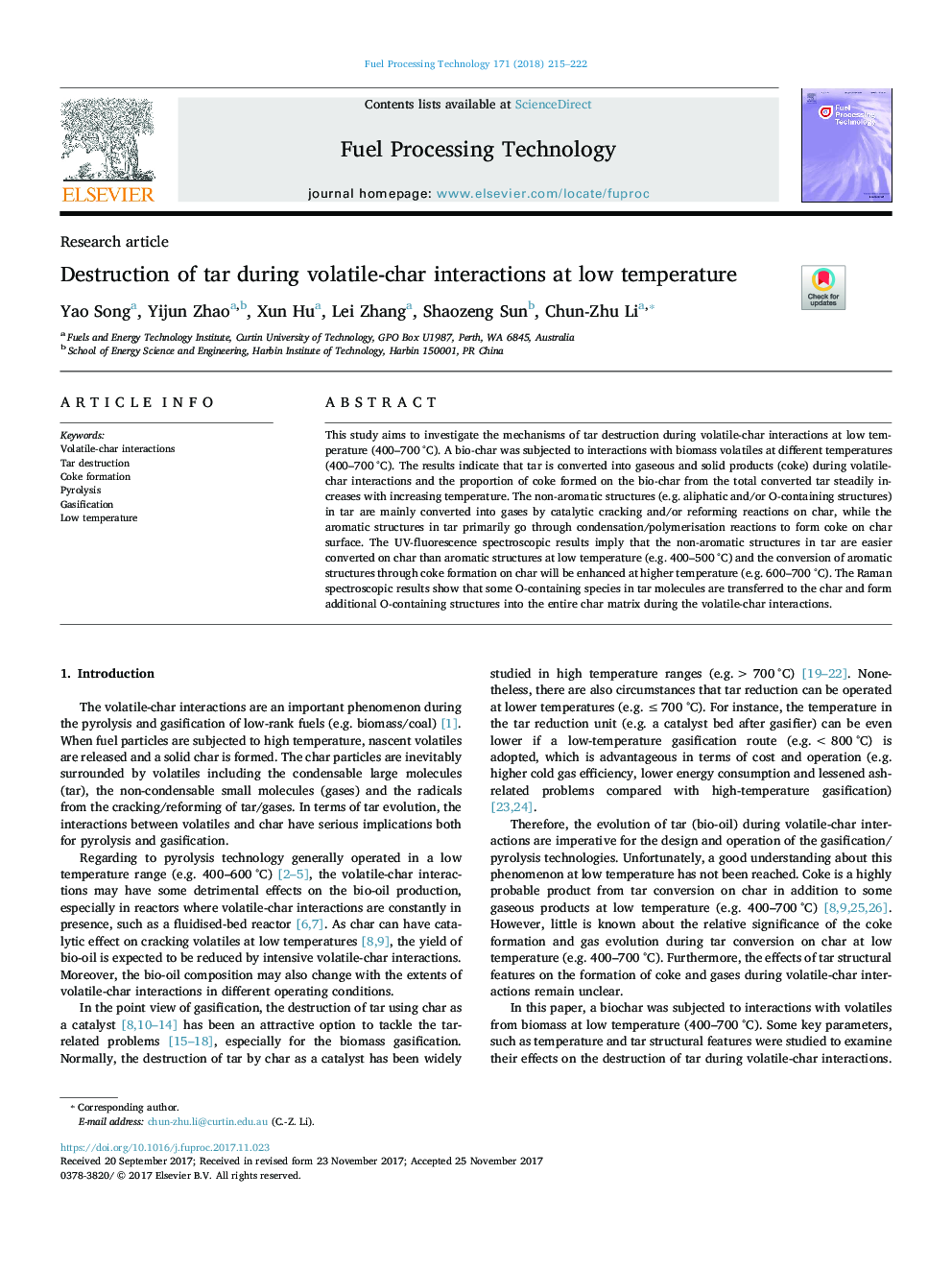| Article ID | Journal | Published Year | Pages | File Type |
|---|---|---|---|---|
| 6656519 | Fuel Processing Technology | 2018 | 8 Pages |
Abstract
This study aims to investigate the mechanisms of tar destruction during volatile-char interactions at low temperature (400-700 °C). A bio-char was subjected to interactions with biomass volatiles at different temperatures (400-700 °C). The results indicate that tar is converted into gaseous and solid products (coke) during volatile-char interactions and the proportion of coke formed on the bio-char from the total converted tar steadily increases with increasing temperature. The non-aromatic structures (e.g. aliphatic and/or O-containing structures) in tar are mainly converted into gases by catalytic cracking and/or reforming reactions on char, while the aromatic structures in tar primarily go through condensation/polymerisation reactions to form coke on char surface. The UV-fluorescence spectroscopic results imply that the non-aromatic structures in tar are easier converted on char than aromatic structures at low temperature (e.g. 400-500 °C) and the conversion of aromatic structures through coke formation on char will be enhanced at higher temperature (e.g. 600-700 °C). The Raman spectroscopic results show that some O-containing species in tar molecules are transferred to the char and form additional O-containing structures into the entire char matrix during the volatile-char interactions.
Related Topics
Physical Sciences and Engineering
Chemical Engineering
Chemical Engineering (General)
Authors
Yao Song, Yijun Zhao, Xun Hu, Lei Zhang, Shaozeng Sun, Chun-Zhu Li,
